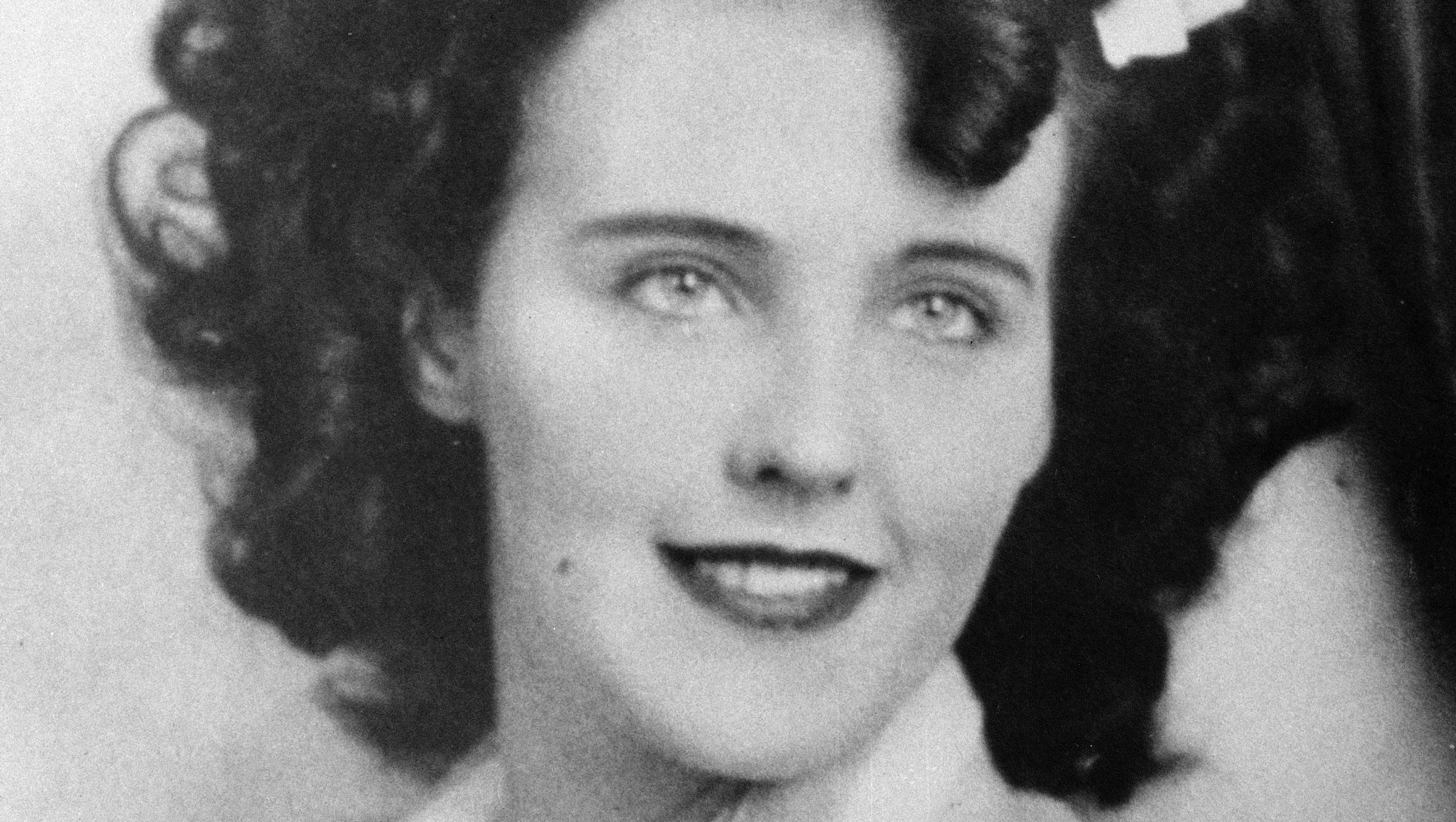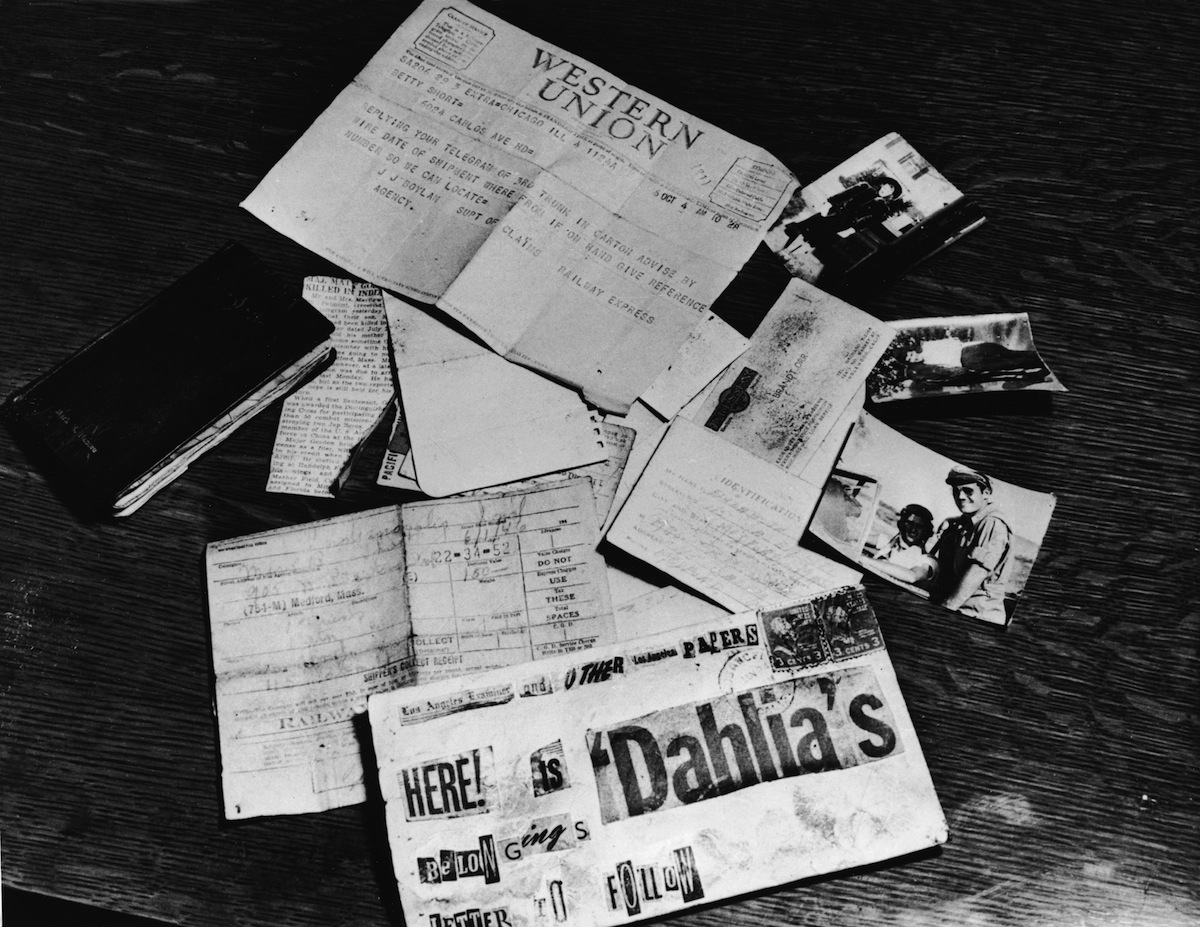The Black Dahlia murder remains one of the most infamous and unsolved crimes in history, capturing the public's attention for decades. The gruesome murder of Elizabeth Short, whose nickname became the "Black Dahlia," left a lasting impact on Los Angeles and the world. This article delves into the chilling details of the Black Dahlia murder scene pictures, exploring their significance, the investigation, and the enduring mystery surrounding the case.
Elizabeth Short's tragic death in 1947 sent shockwaves through society, sparking widespread media coverage and an unsolved mystery that continues to fascinate true crime enthusiasts. The photographs taken at the crime scene have become iconic symbols of the case, offering a glimpse into the brutality of the crime while raising countless questions about the killer's motives and identity.
Understanding the Black Dahlia murder scene pictures requires examining the historical context, the forensic details, and the psychological aspects of the case. This article aims to provide a comprehensive analysis of the crime scene images, their role in the investigation, and their lasting influence on popular culture. Let's explore the chilling story behind the Black Dahlia murder scene pictures.
Read also:Discover The Heartfelt Journey Of Mothers Warmth Chapter 2
Table of Contents
- Biography of Elizabeth Short
- Overview of the Crime Scene
- Analysis of the Murder Scene Pictures
- Details of the Investigation
- Forensic Evidence and Importance
- Impact on Media and Popular Culture
- Conspiracy Theories Surrounding the Case
- Psychological Insights into the Killer's Mind
- Why the Case Remains Unsolved
- Modern Perspective and Continued Interest
Biography of Elizabeth Short
Early Life and Background
Elizabeth Short, born on July 29, 1924, in Boston, Massachusetts, was a young woman whose life ended tragically at the age of 22. Known for her striking appearance and dark features, she earned the nickname "Black Dahlia," inspired by the noir films of the era. Before moving to California, Elizabeth worked various jobs, including as a waitress and a clerk, trying to make ends meet.
Her family described her as kind-hearted and ambitious, though her life was marked by frequent moves and unstable relationships. Elizabeth's dream was to become an actress, but her aspirations were cut short by the violent events that unfolded in Los Angeles.
Personal Data
| Full Name | Elizabeth Short |
|---|---|
| Nickname | Black Dahlia |
| Date of Birth | July 29, 1924 |
| Place of Birth | Boston, Massachusetts |
| Date of Death | January 15, 1947 |
| Cause of Death | Strangulation and mutilation |
Overview of the Crime Scene
On January 15, 1947, the body of Elizabeth Short was discovered in a vacant lot at the intersection of Norton Avenue and South Norton Street in Leimert Park, Los Angeles. The gruesome scene captured the attention of the public and law enforcement, as Elizabeth's body was found severely mutilated and posed in a bizarre manner.
Photographers from local newspapers were among the first to document the crime scene, capturing images that would later become iconic symbols of the case. These Black Dahlia murder scene pictures not only provided crucial evidence for investigators but also fueled public curiosity about the case.
Analysis of the Murder Scene Pictures
Key Details in the Photos
The Black Dahlia murder scene pictures reveal several disturbing details that have puzzled investigators and true crime enthusiasts for decades. Elizabeth's body was found split in half at the waist, with her face and body severely mutilated. The killer had also posed her body in a manner that suggested a calculated and deliberate act.
Some of the key observations from the photographs include:
Read also:Tupac And Diddy Relationship The Untold Story
- Elizabeth's body was positioned in a grotesque pose, with her hands above her head and her legs spread apart.
- Her face was cut into a macabre smile, a technique known as "glossopharyngeal laceration."
- There were no signs of a struggle at the crime scene, suggesting that Elizabeth may have been incapacitated before the murder.
Importance of the Photos in the Investigation
The Black Dahlia murder scene pictures played a crucial role in the investigation, providing investigators with valuable clues about the crime. Forensic experts were able to analyze the photographs to determine the cause of death, estimate the time of death, and identify potential suspects.
However, the photographs also raised more questions than answers, as the killer's motives and identity remain unknown to this day. The images continue to fascinate and horrify those who study the case, offering a glimpse into the mind of a cold-blooded killer.
Details of the Investigation
Initial Steps Taken by Authorities
Following the discovery of Elizabeth's body, the Los Angeles Police Department launched a massive investigation into the Black Dahlia murder. Detectives interviewed hundreds of witnesses, collected evidence from the crime scene, and analyzed the murder scene pictures for clues.
Despite their efforts, the investigation failed to produce a conclusive suspect, and the case remains unsolved to this day. Over the years, numerous theories have emerged about the killer's identity, but none have been proven beyond a reasonable doubt.
Challenges Faced by Investigators
One of the biggest challenges faced by investigators in the Black Dahlia case was the lack of physical evidence linking the killer to the crime scene. The absence of fingerprints, DNA, or other forensic evidence made it difficult for authorities to identify a suspect.
Additionally, the media frenzy surrounding the case created pressure on law enforcement to solve the murder quickly, leading to mistakes and missteps in the investigation. The lack of modern forensic techniques at the time also hindered efforts to uncover the truth about Elizabeth's death.
Forensic Evidence and Importance
Forensic analysis of the Black Dahlia murder scene pictures and other evidence collected from the crime scene provided valuable insights into the crime. Experts were able to determine that Elizabeth had been strangled to death and that her body had been posed post-mortem by the killer.
The forensic evidence also revealed that Elizabeth had been dead for several days before her body was discovered, suggesting that the killer had transported her remains to the vacant lot after the murder. This information helped investigators narrow down the timeline of events but did not lead to the identification of the killer.
Impact on Media and Popular Culture
Media Coverage of the Case
The Black Dahlia murder case captured the attention of the media and the public, with newspapers and magazines publishing extensive coverage of the crime. The murder scene pictures became a focal point of the media frenzy, with journalists and photographers competing to obtain exclusive images and details about the case.
The intense media coverage helped raise awareness about the dangers of violence against women but also contributed to the sensationalization of the crime. The Black Dahlia case remains one of the most famous true crime stories in history, inspiring countless books, films, and documentaries.
Pop Culture References
The Black Dahlia murder scene pictures have been referenced in various forms of popular culture, including films, television shows, and literature. The case has inspired numerous works of fiction, with authors and filmmakers using the mystery surrounding Elizabeth's death as a backdrop for their stories.
Some notable examples of Black Dahlia references in popular culture include the 2006 film "The Black Dahlia," directed by Brian De Palma, and the novel "The Black Dahlia" by James Ellroy. These works continue to keep the memory of Elizabeth Short alive, ensuring that her tragic story is not forgotten.
Conspiracy Theories Surrounding the Case
Over the years, numerous conspiracy theories have emerged about the Black Dahlia murder, with some suggesting that the killer was a high-profile individual or part of a larger criminal organization. While these theories are intriguing, they lack concrete evidence to support their claims.
One popular theory suggests that the killer was connected to the Hollywood elite, using their influence to avoid detection. Another theory posits that the murder was part of a larger ritualistic crime, involving multiple victims and a secretive cult.
Psychological Insights into the Killer's Mind
Understanding the Motives
Psychologists and criminologists have long speculated about the motives behind the Black Dahlia murder, analyzing the crime scene pictures and other evidence to gain insights into the killer's psyche. Some experts believe that the killer may have suffered from a severe mental illness, such as schizophrenia or psychopathy, which drove them to commit such a heinous act.
Others suggest that the murder may have been motivated by personal vendetta or revenge, with the killer targeting Elizabeth due to her perceived promiscuity or other perceived flaws. Despite these theories, the true motives behind the crime remain unknown.
Profile of the Killer
Based on the evidence and the Black Dahlia murder scene pictures, investigators have developed a psychological profile of the killer, suggesting that they were likely a male between the ages of 25 and 40 with a history of violent behavior. The killer may have been obsessed with Elizabeth, following her movements and planning the murder meticulously.
While this profile provides some insights into the type of person who may have committed the crime, it has not led to the identification or capture of the killer.
Why the Case Remains Unsolved
The Black Dahlia murder case remains one of the most infamous unsolved crimes in history, with numerous factors contributing to the lack of resolution. The absence of physical evidence, the media frenzy surrounding the case, and the limitations of forensic techniques at the time all played a role in preventing authorities from identifying the killer.
Despite advances in forensic science and technology, the case continues to baffle investigators and true crime enthusiasts, offering no clear answers about the identity or motives of the killer. The Black Dahlia murder scene pictures remain a chilling reminder of the brutal crime and the enduring mystery surrounding Elizabeth Short's death.
Modern Perspective and Continued Interest
In the modern era, the Black Dahlia murder case continues to captivate audiences, with new generations of true crime enthusiasts discovering the story and analyzing the evidence. Advances in forensic science and technology have led to renewed interest in the case, with some experts hoping that new techniques may one day provide answers about the killer's identity.
As long as the Black Dahlia murder scene pictures remain a symbol of the case, the story of Elizabeth Short will continue to inspire curiosity and fascination, ensuring that her tragic death is not forgotten.
Kesimpulan
The Black Dahlia murder scene pictures offer a chilling glimpse into one of the most infamous unsolved crimes in history. Through an analysis of the crime scene, the investigation, and the psychological aspects of the case, we gain a deeper understanding of the brutality and mystery surrounding Elizabeth Short's death.
We invite you to share your thoughts and theories about the Black Dahlia case in the comments section below. For more true crime stories and insights, explore our other articles and resources. Together, we can continue to uncover the truth behind some of the most fascinating and perplexing cases in history.


